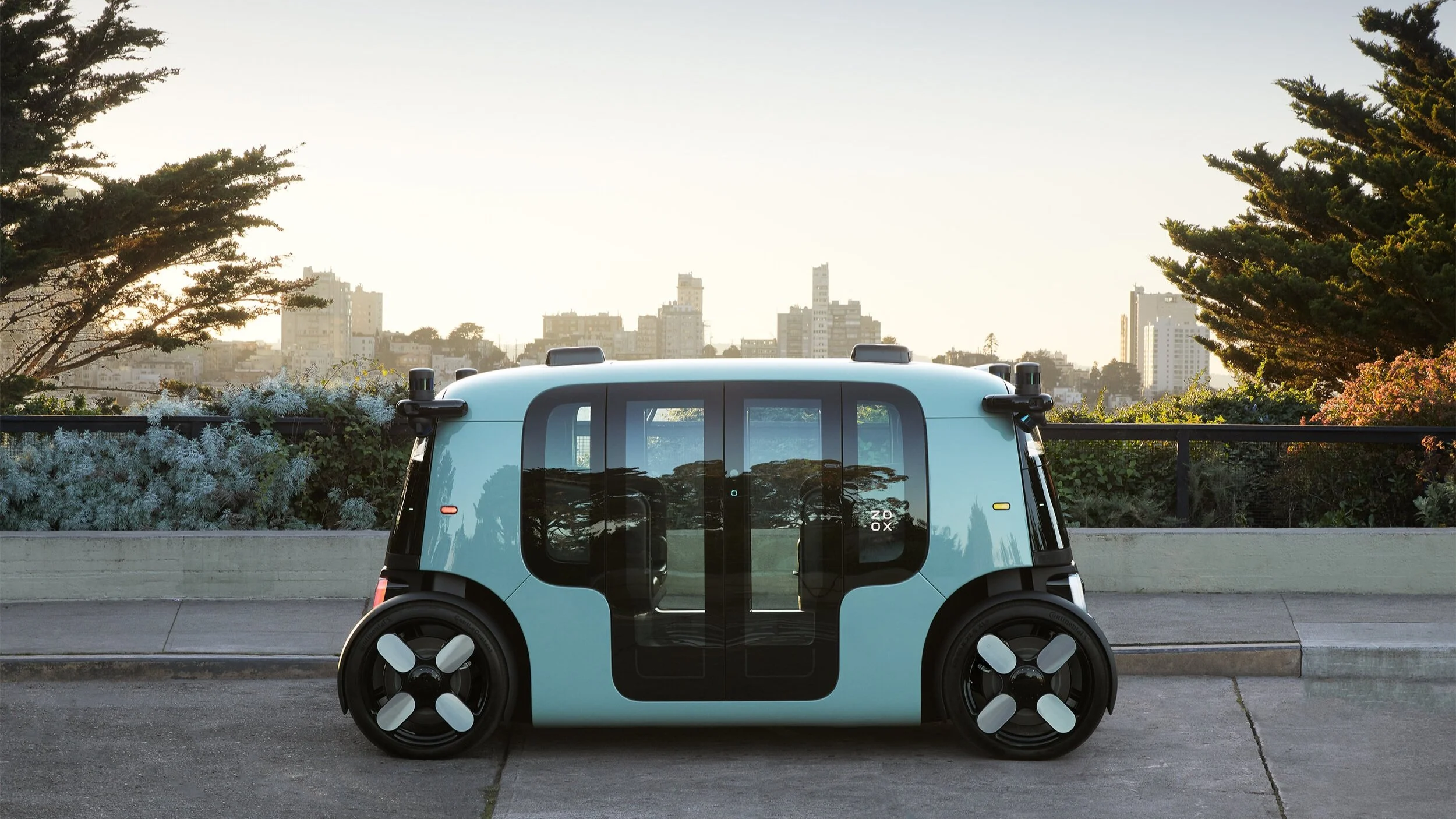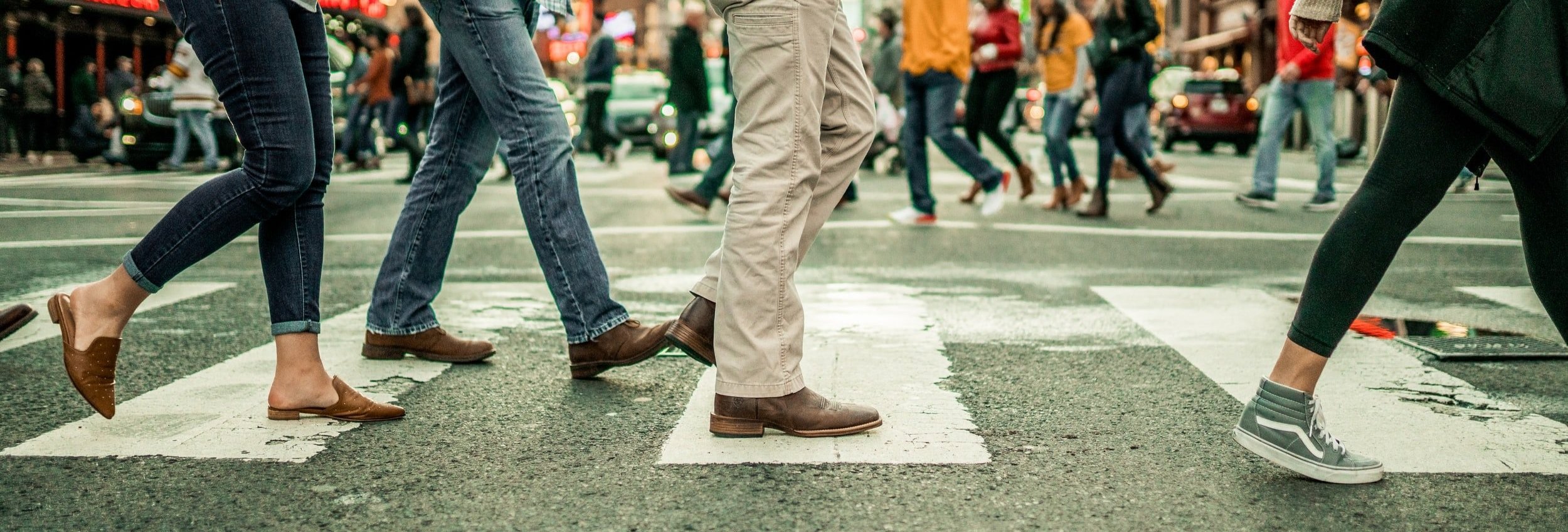Our vision
An autonomous and electric future that transforms mobility for the better—for everyone.
-

Safer Streets
Autonomous vehicles (AVs) will reduce collisions caused by human error and enable vehicle designs that are safer for all road users.
-

Clean Air
Decarbonizing transportation is essential to achieving global climate goals, which is why SAVE’s members are committed to deploying zero-emission AVs.
-

Equity and Accessibility
Purpose-built vehicle designs and new services enabled by AVs can provide affordable and accessible mobility to those who need it most.

Safer Streets
Fatal crashes are a public health crisis that caused 38,680 deaths on U.S. roadways in 2020.
AVs can help reduce crashes caused by drunk driving, speeding, and distraction.
Even though Americans drove 13% fewer miles compared to 2019, fatalities increased by 7% in 2020 due to factors like impaired driving and speeding. The first half of 2021 saw the largest spike in fatal crashes in 20 years.
AVs can improve safety because they are programmed for safer driving, avoiding risky human behaviors that contribute to most fatal crashes today: driving under the influence, speeding, and distraction.
Adding AV technology to existing vehicle designs is like putting a rotary dial on a cell phone.
For the history of the automotive industry, safety has largely focused on protecting people after a crash occurs. Modern cars have largely been designed for the safety of drivers, rather than other road users—leading to larger vehicle sizes that are more deadly for people biking and walking. Pedestrian fatalities rose by 46% from 2010-2019, while all other traffic deaths rose by 5%. In 2020 alone, crashes killed 6,721 pedestrians.
Revolutionary technology must be complemented by an evolution in design. AVs enable the shift to a fundamentally proactive safety approach—that is, not only how to protect people in the event of a crash, but also how to prevent crashes and to keep people out of harm’s way.
A Virginia Tech study found that zero-occupant delivery AVs can reduce fatal crashes and injuries by about 60% through novel vehicle designs and the lack of people inside. New safety innovations like those Zoox has built, such as more precise braking controls or external lighting and sound systems to communicate with pedestrians and other road users, have the potential to avoid crashes from occurring in the first place.
Safety Platform
-
Many federal vehicle standards were written in the decades before AV technology was developed. These standards often do not contemplate AVs without a human operator or driving controls like steering wheels and pedals—or even vehicles that will exclusively carry goods. SAVE supports modernizing these standards, while maintaining their safety intent, to deliver on better safety outcomes.
-
NHTSA has the authority to grant exemptions for vehicles with purpose-built designs, if their safety is determined to be equal to or greater than vehicles that meet federal standards. These exemptions are currently restricted to 2,500 vehicles. SAVE supports Congressional action to increase the exemption cap, which will enable the scaled and expeditious deployment of AVs under NHTSA’s safety oversight.
-
Some state vehicle codes still assume the inclusion of equipment supporting human operation, such as mirrors, windshield wipers, dashboard indicators, and other types of manual controls. This equipment serves no safety purpose on AVs designed to be exclusively operated by the automated driving system. SAVE supports modernizing these codes to provide a clear pathway to deployment for innovative, purpose-built vehicles.
-
Making our streets safe for everyone—whether on foot, on a bike, or in a vehicle—is vital to building healthy, livable communities. Too often, our streets are dangerous by design when vehicle throughput is prioritized over safety. SAVE supports Vision Zero and Complete Streets initiatives that will improve safety outcomes for all road users.

Cleaner Air
The transportation sector is the #1 contributor to greenhouse gas emissions in the United States.
Deploying shared AVs on electric platforms will help reduce emissions.
According to the U.S. Environmental Protection Agency, the transportation sector is the single largest source of greenhouse gas emissions. The pollution from transportation contributes to climate change and negatively impacts community health, such as increasing the prevalence of life-threatening childhood asthma, especially among communities of color.
The widespread deployment of electric AVs in shared fleets, combined with transit and active transportation, can lead to an 80% reduction in CO2 emissions by 2050.
SAVE’s members are united in our commitment to deploying AVs that are fully electric. To this end, for example, SAVE supported SB 500 in California during the 2021-22 legislative session, which requires all light-duty AVs under 8,501 pounds built after 2030 to be EVs. This bill was signed into law in September 2021.
AVs will enable shared vehicles and services that make transportation more efficient.
In 2019, the average American wasted 54 hours in traffic. Decades of building new roads and expanding highways has demonstrated that we cannot build our way out of congestion. It also will not be enough for every American to utilize their own individually-owned AVs.
Instead, we need to find ways to use our roads more efficiently, and this means consciously embracing shared mobility–especially in dense urban environments. Shared AVs present a transformational opportunity to offer safer, more convenient and affordable mobility options that use roadway space more effectively and meet the needs of America’s growing towns and cities—and perhaps even ultimately help America reclaim excess roadways for new buildings or recreational spaces.
By going electric and “batching” deliveries to multiple people, delivery AVs could help avoid 407 million tons of CO2 emissions from 2025 to 2035 — effectively offsetting the emissions from powering every home in the four largest cities in the U.S. for a decade.
Sustainability Platform
-
The public sector can play a pivotal role in reducing emissions from the transportation sector through a mix of tax and regulatory incentives. SAVE supports policy initiatives to accelerate the transition to electric vehicles.
-
Widespread availability of charging infrastructure is essential to the widespread adoption of EVs. SAVE supports strategic investments by the public and private sectors to meet this growing need, including in historically underserved communities.
-
All of our members have committed to deploying AVs on fully electric platforms. SAVE supports transitioning the AV sector to zero-emission vehicles.

Equity and Access
Over 5 million Americans with disabilities report facing significant transportation barriers that limit their daily activities.
AVs can provide a new, affordable mobility option for those who are unable to drive.
One in 4 U.S. adults–61 million Americans–have a disability that impacts major life activities. An estimated 25.5 million Americans live with travel-limiting disabilities that make traveling outside of the home difficult. Many people with disabilities face challenges with some or all modes of transportation, and retrofitting a vehicle for accessibility can cost between $20,000 to $80,000 for substantial modifications.
AVs can provide a new, affordable mobility option for those who are unable to drive and enable new interior designs that more readily accommodate wheelchair users. In addition to improving quality of life and mobility independence, AVs could unlock an estimated 2 million new career opportunities for people with disabilities.
AVs can reduce transportation barriers in underrepresented communities.
More than 20 million low-income people in America live in food deserts, or low-income communities that are far from supermarkets. These Americans are less able to afford the higher costs of the smaller shops in their neighborhood, are less likely to own a car, and suffer from higher rates of obesity and heart disease.
Autonomous deliveries can improve food access for 70% (or 14 million) low-income Americans living in food deserts if these vehicles travel on roadways that permit speeds of up to 45mph.
Equity & Access Platform
-
Autonomy enables new interior designs that are more accessible for passengers of varying abilities, while delivery AVs with purpose-built designs can provide affordable access to essential items for people with disabilities and individuals living in food deserts. SAVE supports updating FMVSS to reflect innovations in vehicle design.
-
Increasing the availability of accessible vehicles will ensure that people with disabilities do not have to pay a premium for transportation. SAVE supports a streamlined and predictable petition process for FMVSS exemptions and increasing the 2,500 vehicle cap for accessible AVs with purpose-built designs.
-
AV technology is unlocking new, purpose-built vehicle designs that were not previously contemplated. Autonomy allows for vehicles with no driver, enabling dozens of safety innovations in vehicle design—or even vehicles with no occupants at all, just goods. SAVE supports harmonizing state vehicle codes with advances in vehicle design and federal standards.






